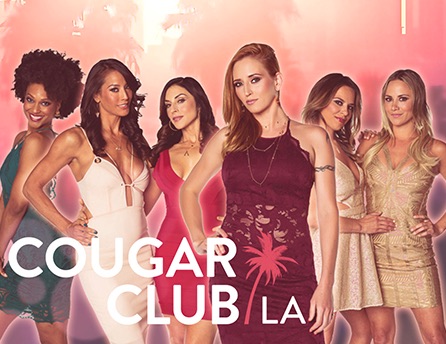Playboy TV’s Naked Ambitions

Playboy made major news when it announced that the venerable men’s magazine would cover up its famed nudes. Yet it is business as usual at Playboy TV, the 34-year-old cable channel with little connection to the magazine other than the name and bunny branding. Playboy TV rolled out a pair of originals in recent weeks, and aims to launch as many as a dozen shows this year—clothing optional.
“The master brand has no impact on how we make decisions,” says Wendy Miller, VP of programming and production at Playboy TV. “We do whatever is best for the channel.”
It’s a complex connection between Playboy and Playboy TV. MindGeek licenses and operates Playboy TV and racier cousin Spice TV. Playboy TV is available in over 66 million homes nationwide, and in dozens of foreign countries. Playboy, meanwhile, reacquired Playboy.com from MindGeek (then called Manwin) in 2014.
Magazine insiders say the move to cover up nudes is about appealing to a wider audience and advertiser base. But Playboy magazine’s brightest days are clearly behind it. A story in trade publication Folio earlier this month deemed Playboy “irrelevant,” and said all Playboy Enterprises properties, from the magazine to the mansion, are on the block.
The TV channel is not for sale, but faces similar challenges. “I presume there’s still value in the recognizable Playboy brand among older audiences,” says Christine Becker, associate professor of film, television and theater at Notre Dame. “But the younger the audience, the less that brand means. So they will presumably have to find a way to refresh the brand and make it visible for new generations of audiences.”
Eat Or Be Eaten
That is Miller’s task. A veteran of Oxygen and NBC, she oversees production of originals such as unscripted Cougar Club LA, which “puts you in a mansion with five sensual, mature and single women…looking to devour young men,” and The Arcade, which she likens to a “German Jersey Shore.”
The smarter way to stay on top of broadcasting and cable industry. Sign up below
Of the 10-12 yearly new originals, Miller says half are “premium,” which she defines as, “shows I feel could air on any other network, if you took out the sexual content.”
Miller cites ABC’s Bachelor/Bachelorette franchise often. Playboy TV’s sweet spot is when the bachelor(ette) and a paramour disappear behind a closed boudoir door. “People want to know what happens in that room,” says Miller.
Over the decades, Playboy TV has faced challenges from the VHS, DVD and, more recently, the internet, where just about any kind of stimulation is a few clicks away. “We can’t compete with free, and we can’t compete with really, really dirty,” Miller says. “What we can do is offer quality formats that have some sexuality.”
Playboy TV is focused on increasing branded integrations (there are opportunities for, say, condom manufacturers or liquor companies that may not exist elsewhere), and pushing a “TV for 2” coviewing initiative. The channel of course skews male, but Miller mentions “adventurous couples” watching together.
“Women pay the cable bill,” she says. “If you get buy-in from your wife or girlfriend [on a new show], there’s a good chance you can watch the rest of the channel.”
PLAYBOY WILL NEVER FORGET ITS FIRST
The NewFrontswill have a new—but not nude—participant in New York this spring. Playboy struts its stuff for the first time May 13, showcasing the brand’s evolution from your dad’s musty box of magazines to a hipper digital brand.
Much has been made about the magazine’s decision to cover up the nudes, starting with the March issue. But back in 2014, Playboy.com went Safe for Work. The median age of users dropped significantly from 47 to 30.5, says Phillip Morelock, chief digital officer, and digital now represents 75%-80% of the company’s ad revenue. “It really exploded for us, and we decided to apply those changes to the magazine,” he says.
Playboy will showcase a mix of existing programming and new, both scripted and unscripted. The digital verticals include gaming, entertainment, fashion, nightlife, humor, food and wine and, yes, sex. “We look at this as an opportunity to reposition the company,” Morelock says, “for advertisers and other business partners.”
Michael Malone is content director at B+C and Multichannel News. He joined B+C in 2005 and has covered network programming, including entertainment, news and sports on broadcast, cable and streaming; and local broadcast television, including writing the "Local News Close-Up" market profiles. He also hosted the podcasts "Busted Pilot" and "Series Business." His journalism has also appeared in The New York Times, The L.A. Times, The Boston Globe and New York magazine.

